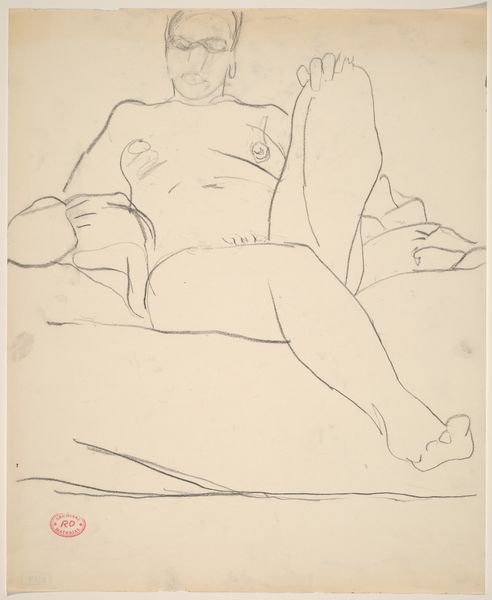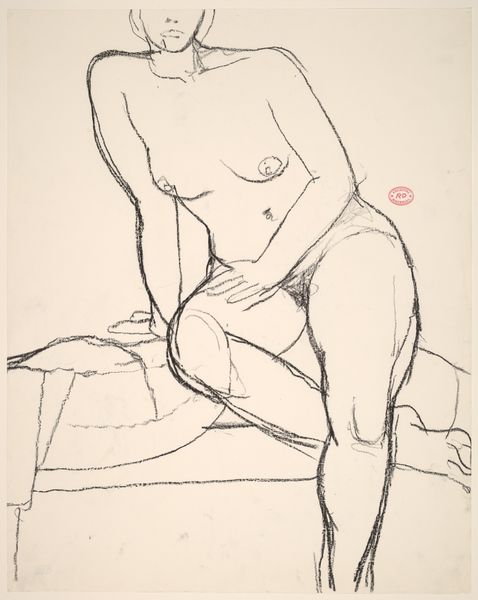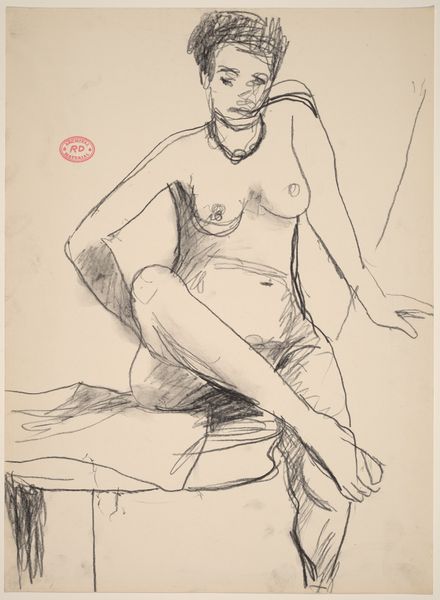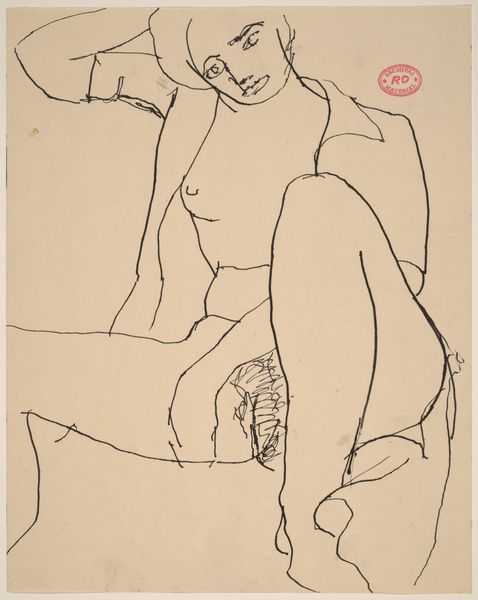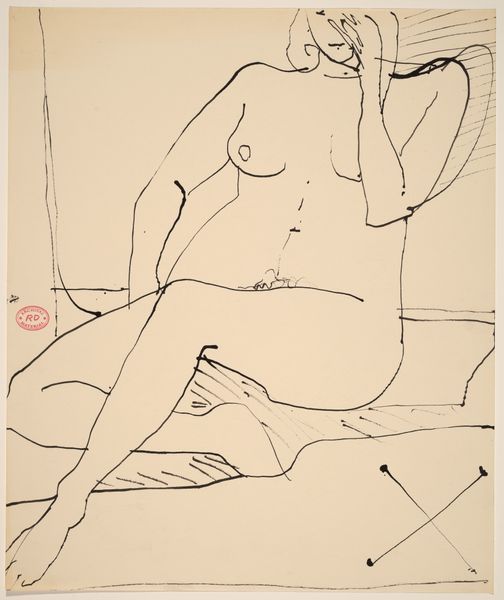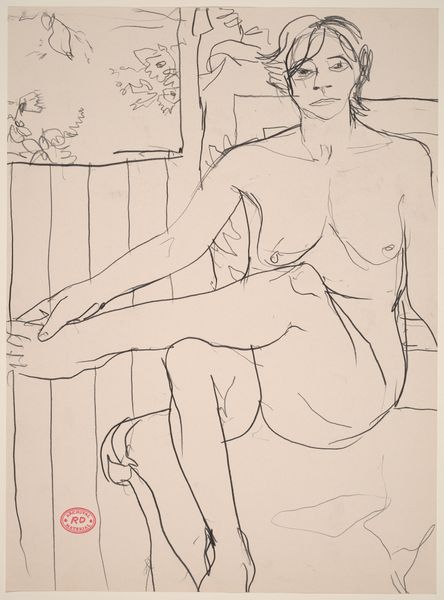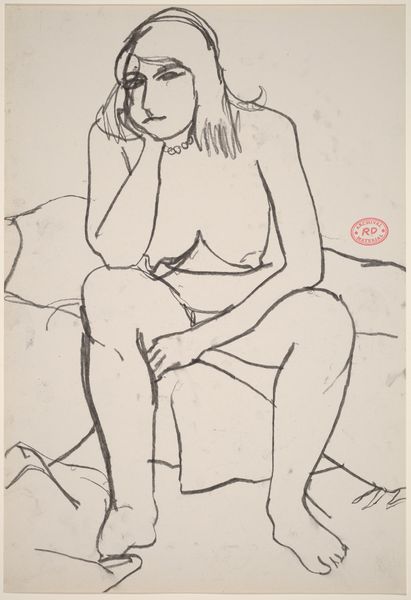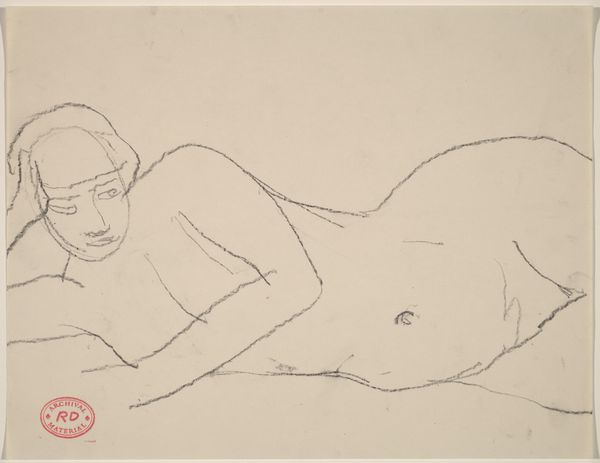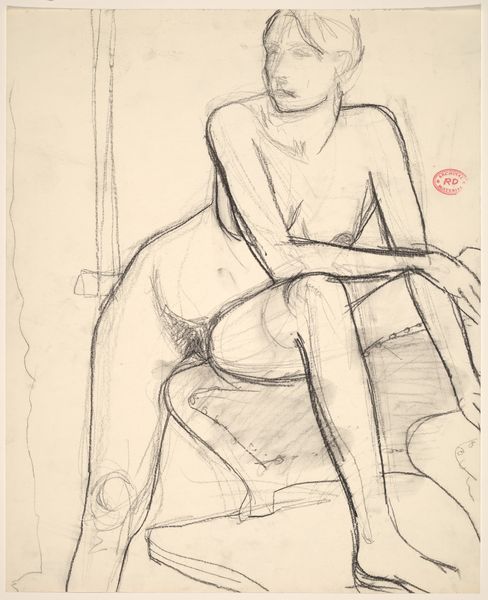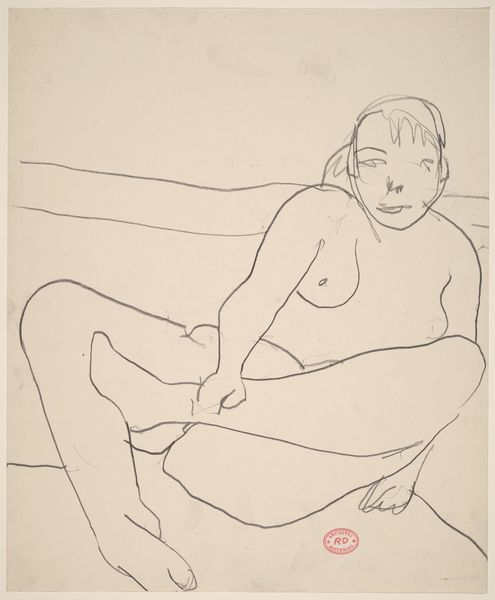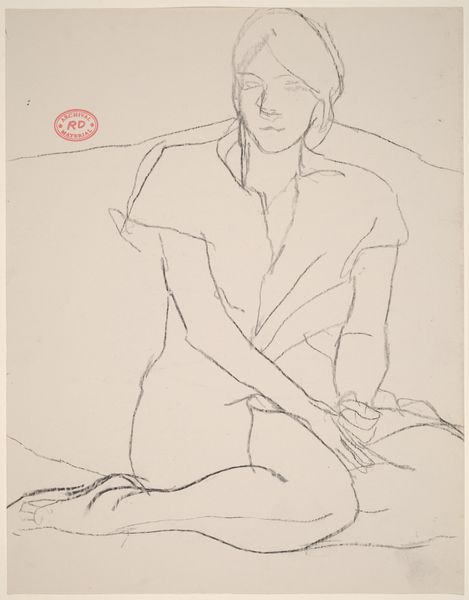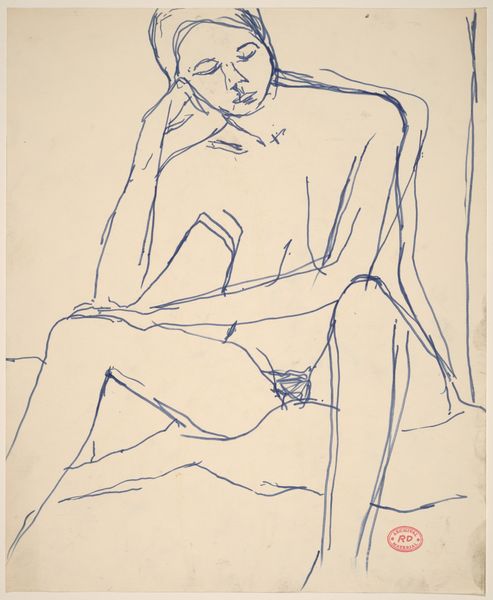![Untitled [female nude with clasped hands sitting on a bed] by Richard Diebenkorn](/_next/image?url=https%3A%2F%2Fd2w8kbdekdi1gv.cloudfront.net%2FeyJidWNrZXQiOiAiYXJ0ZXJhLWltYWdlcy1idWNrZXQiLCAia2V5IjogImFydHdvcmtzL2M3YjVhMjY5LTFiNjEtNDIwOS1iMDMxLTcwM2RmNDdiMDE1Ni9jN2I1YTI2OS0xYjYxLTQyMDktYjAzMS03MDNkZjQ3YjAxNTZfZnVsbC5qcGciLCAiZWRpdHMiOiB7InJlc2l6ZSI6IHsid2lkdGgiOiAxOTIwLCAiaGVpZ2h0IjogMTkyMCwgImZpdCI6ICJpbnNpZGUifX19&w=3840&q=75)
Untitled [female nude with clasped hands sitting on a bed] 1955 - 1967
0:00
0:00
drawing
#
portrait
#
drawing
#
figuration
#
bay-area-figurative-movement
#
nude
Dimensions: overall: 43.2 x 35.6 cm (17 x 14 in.)
Copyright: National Gallery of Art: CC0 1.0
Curator: Welcome. Today, we are observing Richard Diebenkorn's "Untitled [female nude with clasped hands sitting on a bed]", created sometime between 1955 and 1967. This portrait drawing employs delicate lines to render the female form. What strikes you initially about this work? Editor: It’s intimate, almost melancholic. The figure's pose, with her hands clasped, and the tentative lines, suggest a sense of vulnerability. There’s a directness to her gaze but a feeling of hesitation overall. Curator: Precisely. Diebenkorn often returned to figuration during periods framed by larger movements in the art world. The artwork's emotional quality relates to the renewed interest in representing human subjects, a defiance perhaps of mid-century abstraction. Consider how artists engage with political discourse simply by turning toward or away from the figure. Editor: Right, and there’s something radical even now in simply representing the female body outside of an overtly sexualized context. Her posture feels casual, as though she hasn't posed so much as settled in a domestic space that holds the complexities of identity. Her slightly slouched, clasped hands also reflect uncertainty and introspection, offering the chance to witness a private, feminine experience. Curator: Indeed. There is tension here that stems from art's complex negotiation between objective representation and internal meaning. Note how the gestural sketch lines give way to a deeper emotional current. The artist provides visual evidence of art operating in broader societal conditions—the figure embodying strength in her raw simplicity, challenging conventions during shifting times. Editor: I agree, and it encourages viewers to recognize the layered experiences women face through society and popular culture, creating moments for authentic portrayals and reflections on one's own relationship to that identity. Curator: These artistic choices highlight a subtle yet potent resistance against rigid norms of art history and gender expectations prevalent then and perhaps still, resonating through contemporary discussions. Editor: It’s these complex layers— vulnerability, domesticity, that understated but resonant presence of female representation outside the patriarchal gaze, offering new dialogue to the definition and purpose of figuration even today— that I appreciate the most. Curator: Indeed. An exploration of form reflecting culture.
Comments
No comments
Be the first to comment and join the conversation on the ultimate creative platform.
